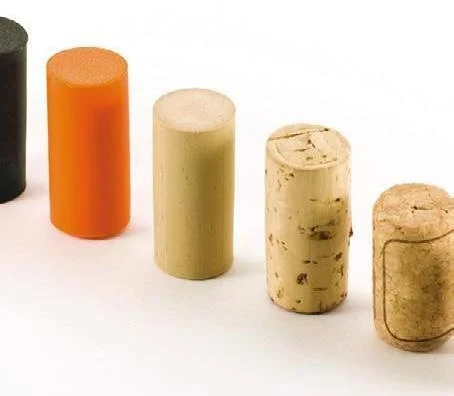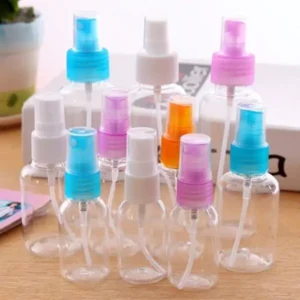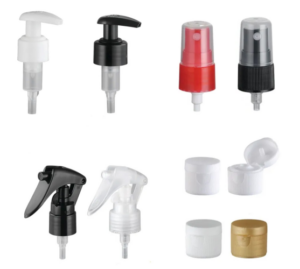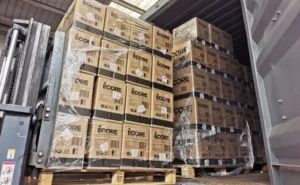Anyone who’s ever popped a cork from a wine bottle knows that tiny piece of material does more than just keep the liquid inside. It’s the gatekeeper of flavor, controlling how much oxygen interacts with the wine as it ages. But here’s the catch: if the cork is the wrong size, even the best wine can go bad. This is especially true for the two most common bottle sizes in the industry—750ml and 1.5L magnums. Choose a cork that’s too small, and you’ll get leaks or premature oxidation. Too large, and you risk breaking the bottle or damaging the cork during insertion. Let’s break down how to get it right, whether you’re bottling a small-batch red or a magnum of your flagship blend.

Understanding Wine Cork Basics
Before diving into sizes, let’s talk about what makes a cork work. A wine cork has three main jobs: create an airtight seal to prevent leakage, allow a tiny amount of oxygen to enter (which helps the wine age gracefully), and keep contaminants out. To do this, its dimensions matter more than you might think.
Corks are defined by three key measurements:
- Diameter: The width of the cork, which must match the bottle’s neck to create a tight seal.
- Length: How long the cork is, which affects both the seal and the rate of oxygen transfer.
- Taper: A slight narrowing (usually 1-2mm) from top to bottom, making insertion easier without compromising the seal.
There are three main types of corks, each with size nuances:
- Natural corks: Made from cork oak bark, they’re elastic and ideal for aging but can vary slightly in size.
- Technical corks: A blend of natural cork granules and binders, offering more size consistency.
- Synthetic corks: Made from plastic, they’re uniform in size but less breathable, better for short-term storage.
Bottle Neck Specifications for 750ml and 1.5L Bottles
The first step in choosing a cork is understanding your bottle’s neck. Not all bottles are created equal, but there are standards:
- 750ml bottles: These are the workhorses of the wine world. Most have a neck with an inner diameter of 18-19mm and an outer diameter of 29mm (known as a 29mm neck finish). The neck height (the space where the cork sits) is typically 30-35mm.
- 1.5L magnum bottles: Larger in volume, they often have wider necks to accommodate the extra liquid. Expect an inner diameter of 19-20mm and an outer diameter of 30-31mm (30mm neck finish). Neck height is usually 35-40mm, giving more space for a longer cork.
Why does this matter? A cork that fits a 29mm neck finish won’t work for a 30mm one, and vice versa. Always check your bottle’s neck finish code before ordering corks.
Critical Factors in Cork Size Selection
Choosing the right size comes down to four key factors:
Diameter Compatibility
The cork’s diameter (before insertion) should be slightly larger than the bottle’s inner neck diameter to create a tight seal. For example:
- A 750ml bottle with an 18mm inner neck needs a cork with a 24-25mm diameter (it compresses to fit).
- A 1.5L bottle with a 19mm inner neck needs a 26-27mm diameter cork.
Too small, and the cork won’t expand enough—hello, leaks. Too large, and you’ll struggle to insert it, possibly cracking the bottle or damaging the cork.
Length Requirements
Longer corks mean more surface area in contact with the bottle neck, which slows oxygen transfer—critical for aging.
- For 750ml bottles: Short corks (24mm) work for wines meant to be drunk within a year. Longer ones (29-30mm) are better for wines aging 5+ years.
- For 1.5L bottles: Because they hold more wine, they need slower oxygen exchange. Go with 30mm corks for 2-5 years of aging, 35-45mm for 10+ years.
Taper Design
Most corks have a slight taper (the top is wider than the bottom) to make insertion easier. For 750ml bottles, a taper of 1mm (e.g., 25mm top, 24mm bottom) works. For 1.5L bottles, a 1-2mm taper (27mm top, 25mm bottom) is standard. This ensures the cork seats evenly without gaps.
Cork Compression
Corks need to compress to fit the neck, then expand to seal. Natural corks compress best (up to 30% of their diameter), while synthetic corks compress less (around 20%). This means synthetic corks need a tighter size match to avoid leaks.
Recommended Cork Sizes for 750ml Wine Bottles
Stick to these guidelines for 750ml bottles:
- Lengths:
- 24mm: Best for white wines, rosés, or reds meant to be consumed within 1-2 years.
- 29mm: Good for red wines aging 2-5 years.
- 30mm: Ideal for premium reds (e.g., Cabernet Sauvignon, Bordeaux) aging 5+ years.
- Diameters: 24-25mm (fitting 29mm neck finishes).
- Best practices: If you’re unsure, opt for a 29mm length—it’s versatile for most 750ml wines. Pair natural corks with aging wines and technical/synthetic corks with everyday drinking wines.
Recommended Cork Sizes for 1.5L Wine Bottles
1.5L magnums need larger corks to handle their volume:
- Lengths:
- 30mm: Suitable for wines aging 2-5 years (e.g., Merlot, Pinot Noir).
- 35mm: Great for medium-term aging (5-10 years).
- 45mm: Perfect for long-aging wines (10+ years), like high-end Cabernet or Champagne.
- Diameters: 26-27mm (fitting 30-31mm neck finishes).
- Best practices: Always go longer than you think you need. A 1.5L bottle’s extra volume takes longer to age, so a 35mm cork is safer than a 30mm for most magnums.
Mistakes to Avoid in Cork Sizing
Even experienced winemakers make these errors:
- Using 750ml corks for 1.5L bottles: A 25mm diameter cork is too small for a magnum’s wider neck—leakage is inevitable.
- Short corks for long aging: A 24mm cork in a 750ml bottle meant to age 10 years will dry out, letting too much oxygen in.
- Ignoring neck variations: Not all 750ml bottles have 29mm necks. A 1mm difference can ruin the seal.
- Forgetting compression: Synthetic corks don’t expand as much as natural ones. A 24mm synthetic cork won’t seal a 750ml bottle as well as a 24mm natural cork.
How to Measure for Proper Cork Size
Don’t guess—measure your bottles:
- Tools needed: A digital caliper (for diameter) and a ruler (for height).
- Measure inner neck diameter: Insert the caliper into the neck to get the width. Do this for 5-10 bottles—variations are common.
- Measure neck height: From the top of the bottle to the base of the neck (where the cork sits).
- Check neck finish: Look for a code (e.g., 29mm, 30mm) on the bottle mold or ask your supplier.
- Match to cork sizes: Use your measurements to cross-reference with supplier charts. For example, a 18mm inner diameter + 30mm neck height = 24-25mm diameter, 29mm length cork.
Cork Material Considerations by Bottle Size
Each material works differently with 750ml and 1.5L bottles:
- Natural corks: Great for 750ml and 1.5L aging wines. They come in larger diameters (up to 27mm) for magnums but can have size inconsistencies—order a few extra to account for this.
- Technical corks: Their consistent size makes them a solid choice for 1.5L bottles, which need reliable seals. They’re available in 26-27mm diameters.
- Synthetic corks: Best for 750ml wines drunk within 2 years. They’re hard to find in diameters larger than 26mm, so avoid them for 1.5L bottles unless you’re bottling for short-term use.
FAQ: Cork Sizing for 750ml and 1.5L Wine Bottles
- Q: Can I use a 29mm length cork for a 750ml bottle intended to age 10 years?
A: It’s risky. A 30mm cork is better for 10+ years, as it provides a longer seal to slow oxygen transfer.
- Q: Why do 1.5L bottles require wider corks than 750ml bottles?
A: Their necks are wider to accommodate more liquid, so the cork needs a larger diameter to compress and seal properly.
- Q: What happens if the cork diameter is 1mm smaller than the bottle neck?
A: The cork won’t expand enough to seal, leading to oxidation or leakage over time.
- Q: Are synthetic corks available in sizes suitable for 1.5L magnum bottles?
A: Some brands offer 26mm diameter synthetic corks, but they’re less breathable—only use them for wines consumed within 1-2 years.
- Q: How does cork length affect oxygen exposure in 750ml vs. 1.5L bottles?
A: Longer corks reduce oxygen flow. In a 1.5L bottle, a 45mm cork slows oxygen enough to match the larger wine volume, preventing over-oxidation.
Choosing the right cork size isn’t just about fitting a bottle—it’s about preserving the wine’s character for years to come. For 750ml bottles, focus on 24-30mm lengths with 24-25mm diameters. For 1.5L magnums, opt for 30-45mm lengths and 26-27mm diameters. Always measure your bottles first, and don’t skimp on quality—investing in the right cork will pay off when your wine ages beautifully. After all, a great bottle deserves a great cork.






